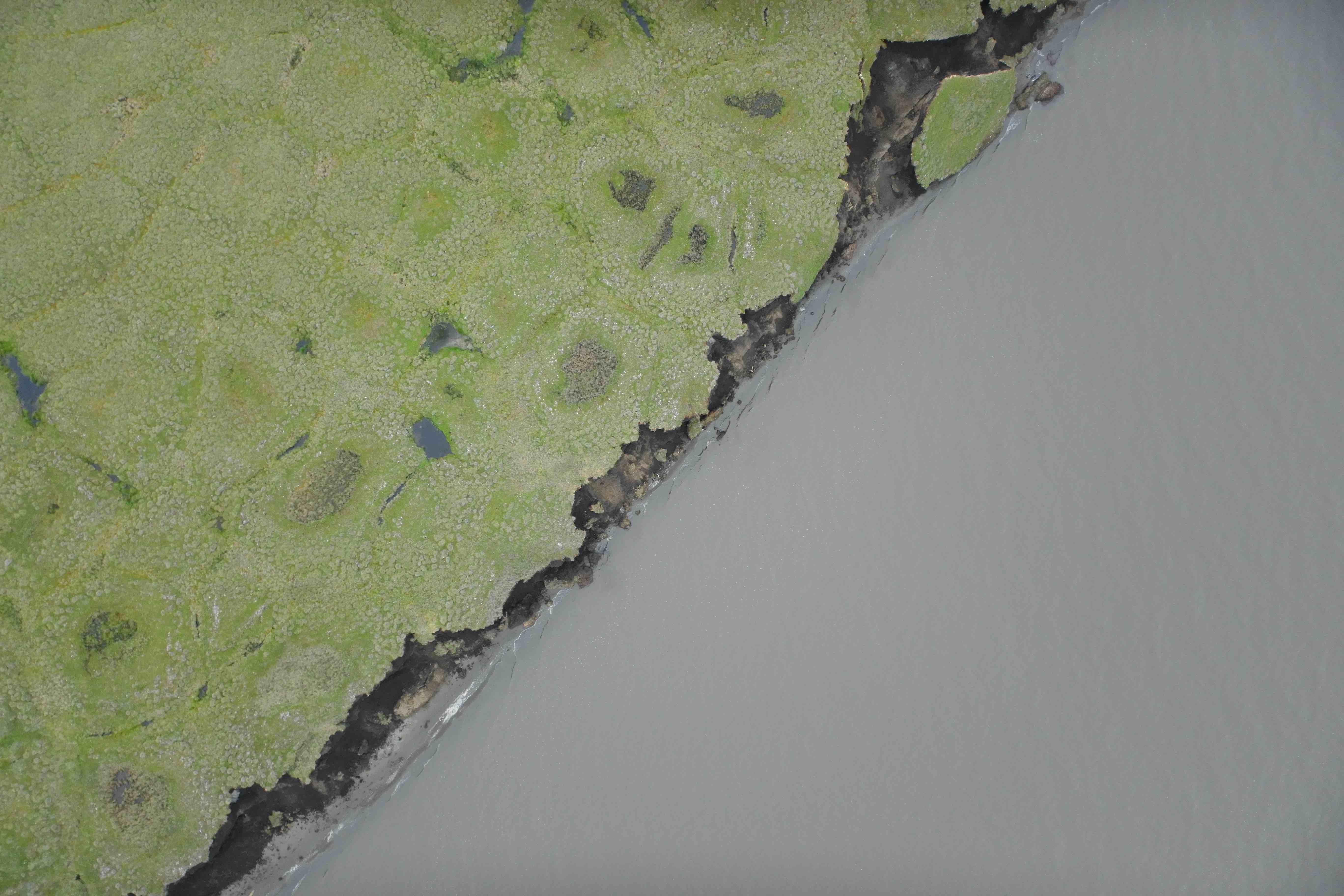Arctic coastal erosion is caused by a combination of thermal and mechanical drivers. Permafrost thaw and ground-ice melt lead to soil decohesion and slumping, while surface ocean waves mechanically abrade the Arctic coast. Sea-ice loss expands the fetch for waves and prolongs the open-water season, increasing the vulnerability of the Arctic coast to erosion.
In the past decades, coastal retreat rates have increased throughout the Arctic, often by a factor of two or more.
The historical acceleration of erosion in the Arctic is linked with the observed decreasing sea-ice cover, and increasing air surface and permafrost temperatures. As for the future, Arctic surface air temperature is projected to exceed its natural range of variability within the next decades. Arctic sea ice decline has already exceeded natural variability, and summer ice-free conditions are projected by mid-twenty-first century. New regimes of surface waves are also projected in the Arctic Ocean and along the coast. Consequently, Arctic coastal erosion rates are expected to increase in the coming decades.
In this new publication, the authors present a novel approach to represent Arctic coastal erosion at the scales of modern Earth System Models. They developed a semi-empirical Arctic coastal erosion model combining observations from the Arctic Coastal Dynamics (ACD) database, climate reanalyses, and ESM and ocean surface wave simulations.
Their results predict that the sensitivity of erosion to warming roughly doubles, reaching 0.4–0.8 m yr−1 °C−1 and 2.3–4.2 TgC yr−1 °C−1 by the end of the century.
The results will inform policymakers on coastal conservation and socioeconomic planning, and organic carbon flux projections lay out the path for future work to investigate the impact of Arctic coastal erosion on the changing Arctic Ocean, its role as a global carbon sink, and the permafrost–carbon feedback.
Read the full publication in here.



